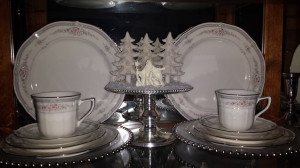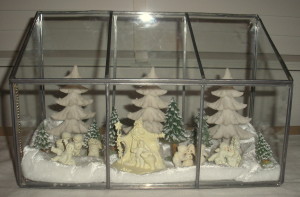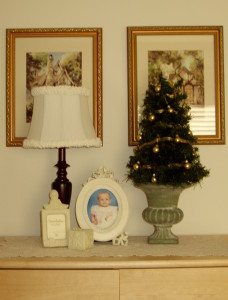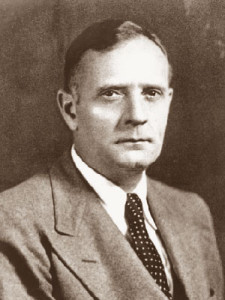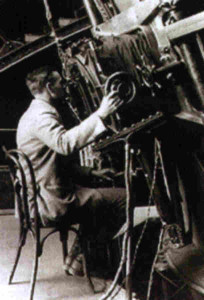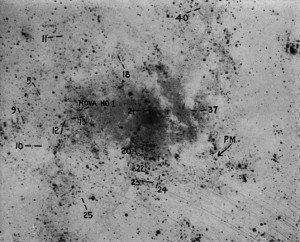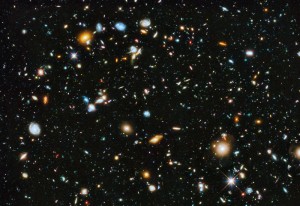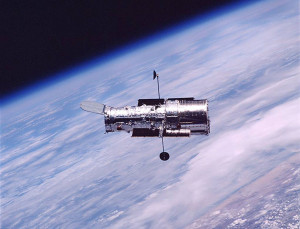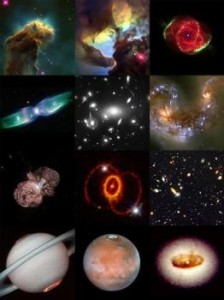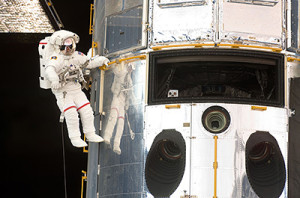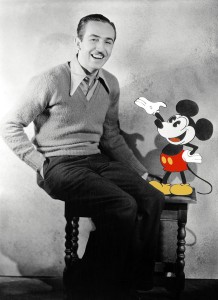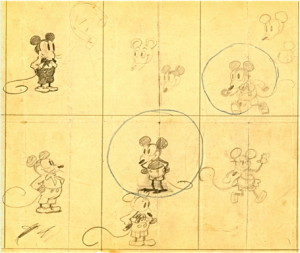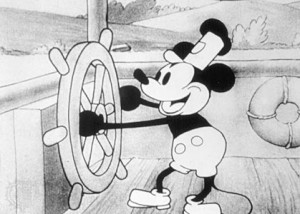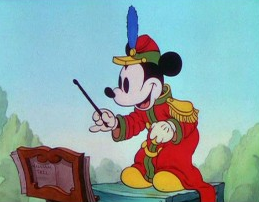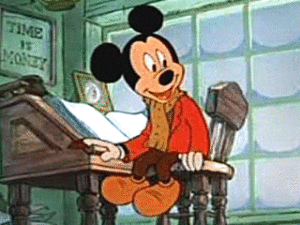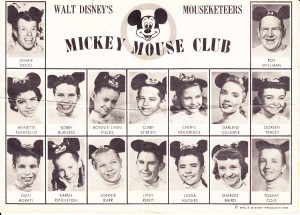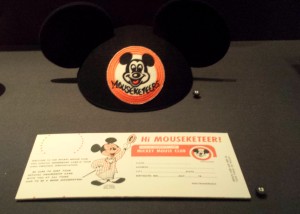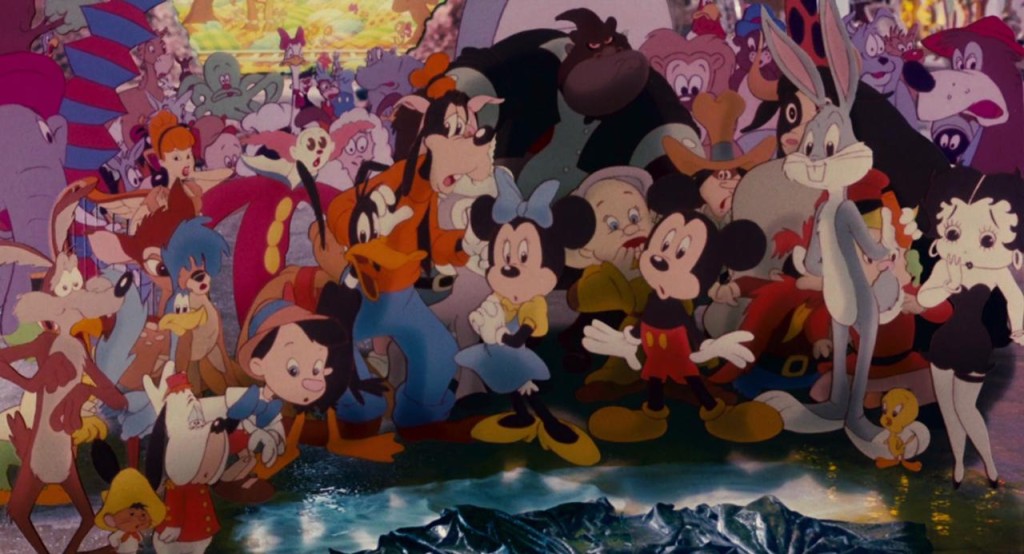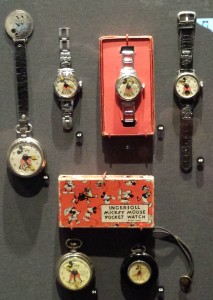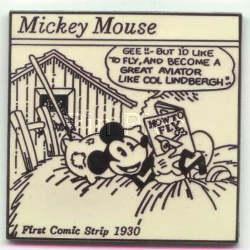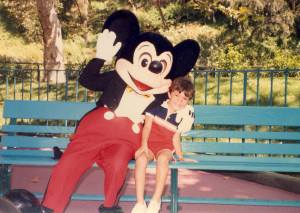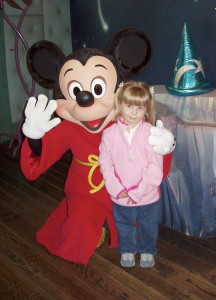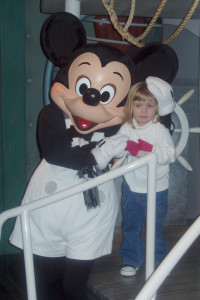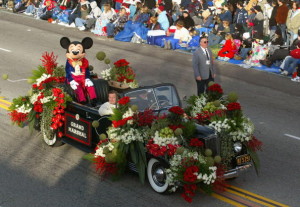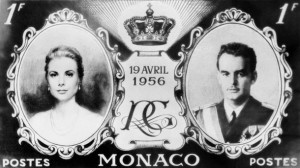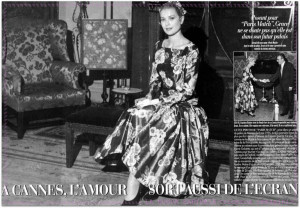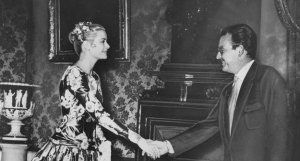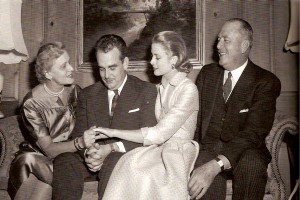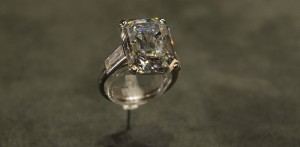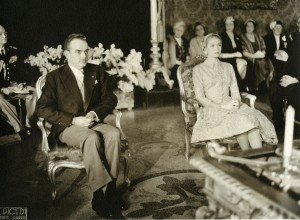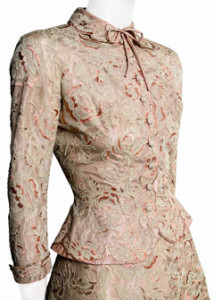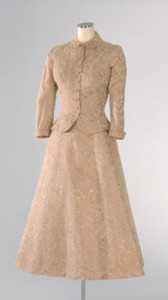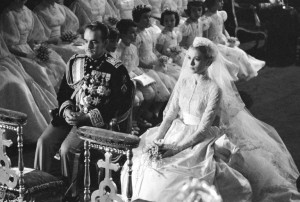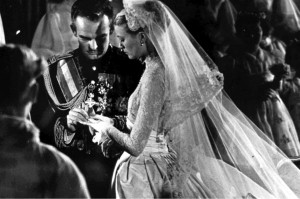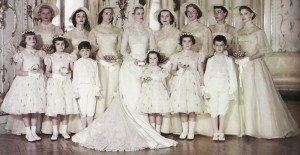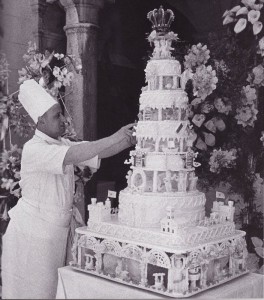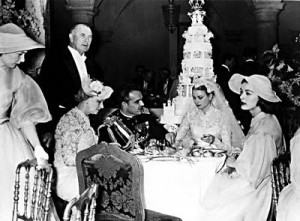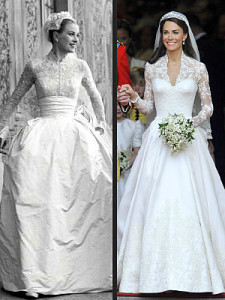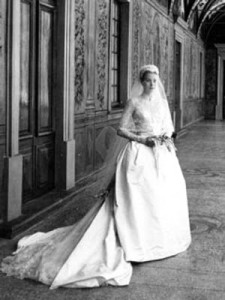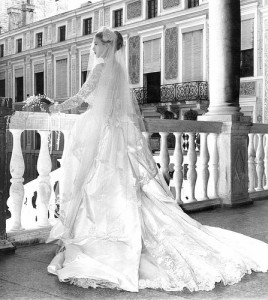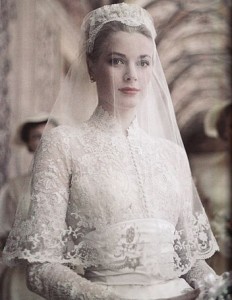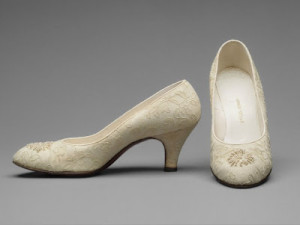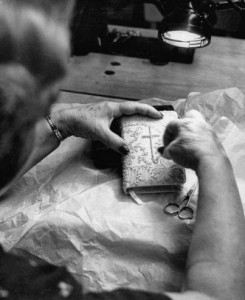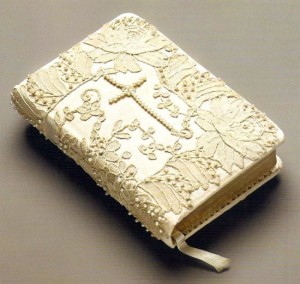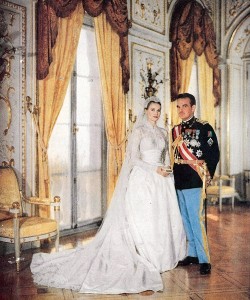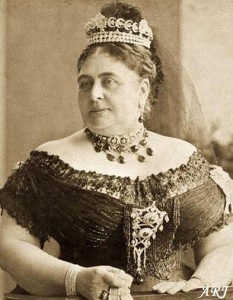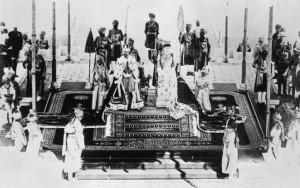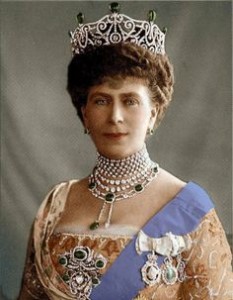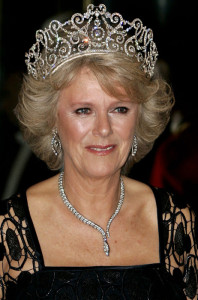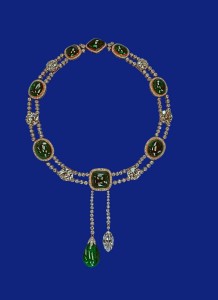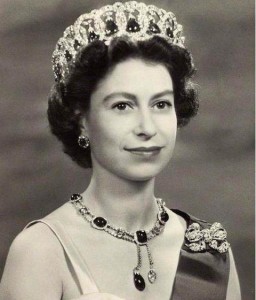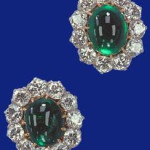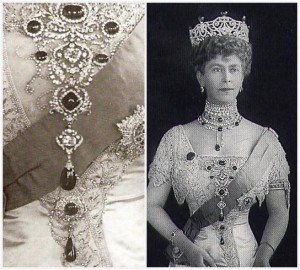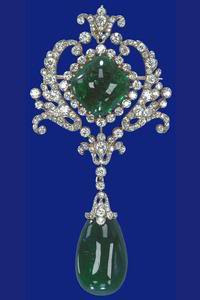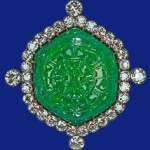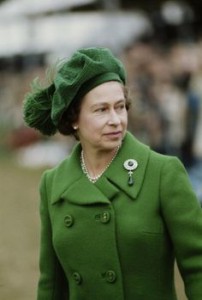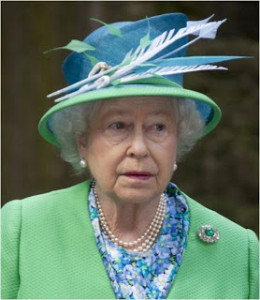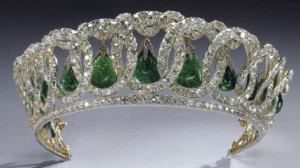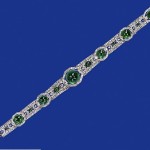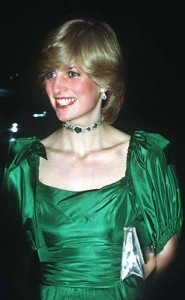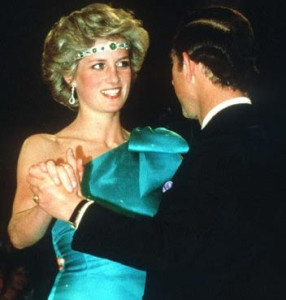Several years ago I started collecting the Department 56 Snowbabies miniatures; I had already been collecting the Department 56 North Pole Village. Initially I started using these charming figurines to decorate our daughter’s bedroom during the Christmas season. But as my blog readers will know from previous posts, I am always changing my holiday decorations and using seasonal items in different ways from year to year.
Snowbabies are perfect for decorating a home for Christmas and shown below are some examples of how I have used them in a variety of different ways:
Snowbabies on a pedestal
For Christmas 2013 I used one Snowbabies figurine from my collection to create a special display which I used in my china cabinet in our dining room. I started the display using a silver pedestal which was the perfect size for the Snowbabies miniature figurine, “Jack Frost – A Touch of Winter’s Magic”. I used three ivory resin pine trees and arranged them toward the back of the pedestal and placed the Snowbabies figurine toward the front. To complete the display, I sprinkled artificial snowflakes around the pedestal.
Snowbabies under glass
For Christmas 2006 I decided to use small glass containers to display my collection of Snowbabies miniature figurines in my daughter’s bedroom. I started the display by covering the plastic liner with a layer of artificial snow, then I arranged the Snowbabies in the container and finished by adding several small resin Christmas trees that I had found in my local craft store.
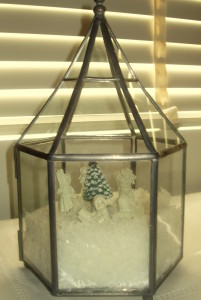
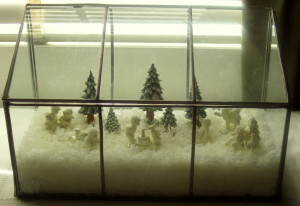
Since I always like to change my holiday decorations from year to year, for Christmas 2008 I used the same long glass container. I started the display by covering the plastic liner with white velvet material. I had recently purchased a larger Snowbabies figurine and centered it in the container. Next I arranged several additional Snowbabies figurines to the right and the left and scattered several small resin Christmas trees. To finish the display, I added three larger ivory resin Christmas trees.
Small Snowbabies Christmas tree
For Christmas 2010, I once again changed the way I display my Snowbabies collection. For this year’s display I started by using a small tabletop Christmas tree which I placed in a small container/vase. Next, I decorated the tree with ¼” wide gold ribbon and small miniature gold Christmas ball ornaments. The tricky part in using the Snowbabies miniatures for this display was that the core of the figurine is made of pewter and can be rather heavy considering their small size. I decided to use very thin wire to attach the Snowbabies and evenly spaced them around the small tabletop tree to complete the display. More importantly, by using the wire for attaching the Snowbabies to the tabletop tree I was able to avoid damaging the figurine. To complete the display I used the Snowbabies figurine, “Star on the Top” as a tree topper. (Special Note: Unfortunately I do not have a photo of that year’s display but there is a photo taken a few years before of the same tree decorated in the same way but minus the Snowbabies figurines which were being used in another display that year)
Snowbabies Christmas wreath
For Christmas 2012, I decided to try something a little different. I started by using a smaller Christmas wreath that was only 12” in diameter. Next, I used the same gold ribbon and gold Christmas balls from the tabletop tree display from a previous year to decorate that year’s Christmas wreath. Then, using the same method that I used to attach the Snowbabies on the tabletop tree, I used thin wire to attach them to the Christmas wreath. (Special note: Unfortunately I do not have a photo of that year’s display)
The history of Snowbabies
Snowbabies are a Christmas tradition that is believed to have started in Europe in the 17th century. In England there is a celebration known as Twelfth Night which was when the three wisemen arrived in Bethlehem after the birth of Christ bringing gifts of gold, frankincense and myrrh. Snowbaby figurines were used as cake decorations that represented the Christ child and were made of marzipan and sprinkled with “snow” sugar. Around the same time in Germany, Christmas shoppers were traditionally given small sugar biscuits depicting the infant Jesus. These snowbabies were originally intended as a sweet treat to eat but eventually customers started to use them instead as decorations for their Christmas trees.
By the late 1900s, these snowbabies gained in popularity and manufacturers began to produce fine porcelain figurines depicting small childern usually dressed in a snowsuit shown riding sleds, skiing or otherwise frolicking in the snow. The manufacturing process involved pouring bisque into molds and then finishing the piece with a sprinkling of finely ground bisque to give the impression that the figurines had received a special dusting of “snow”. The snowbabies usually had delicately painted faces and sometimes the figurines were decorated in soft pastel colors.
Just as the snowbabies popularity started to wane before the turn of the century there was an unexpected boost that would increase their sales. In 1893, an Artic explorer named Robert Perry was on a quest to discover the North Pole and a figurine is said to have been created showing Admiral Perry and his fellow explorer, Dr. Frederick Cook, dressed in snowsuits and grasping a world globe between them. To further the story, while Perry was on his famous expedition into the Artic his wife, Josephine, gave birth to their daughter Marie. She was the first Caucasian child to be born that far north and the native Eskimos in the region remarked about her pale white skin and she became known as Ah-poo-Mic- kaninny or the “snow baby”. With newspaper accounts of the birth and later Perry’s discovery of the North Pole in April 6, 1909, snowbabies once again became popular this time with American buyers.
Then, during World War I manufacturing of snowbabies stopped and unfortunately when production resumed afterwards the quality of the figurines was greatly compromised. Over the next few years the sales of snowbabies continued to decrease and finally with the start of World War II and the loss of European and Asian manufacturers the production of snowbabies was discontinued.
Then in 1986 a Minnesota based company named Department 56 started a new line aptly named Snowbabies which featured 11 figurines designed and inspired by the original antique and vintage snowbabies. Over the years the Department 56 Snowbabies line had proved to be very popular with collectors. Kristi Jensen Pierro, a Department 56 designer, usually starts with a drawing. Those first drawing were inspired by her children and later they were designed and created for specific themes or special celebrations. Once the sketches are approved they are then made into a clay figure and further refined. When the final design is determined a mold is made of the clay figure and then sent into production. The Snowbabies line includes full sized figurines, water globes, picture frames, ornaments and even miniature figurines. Over the past decades licensed pieces have also been produced incorporating Disney and Sesame Street characters.

